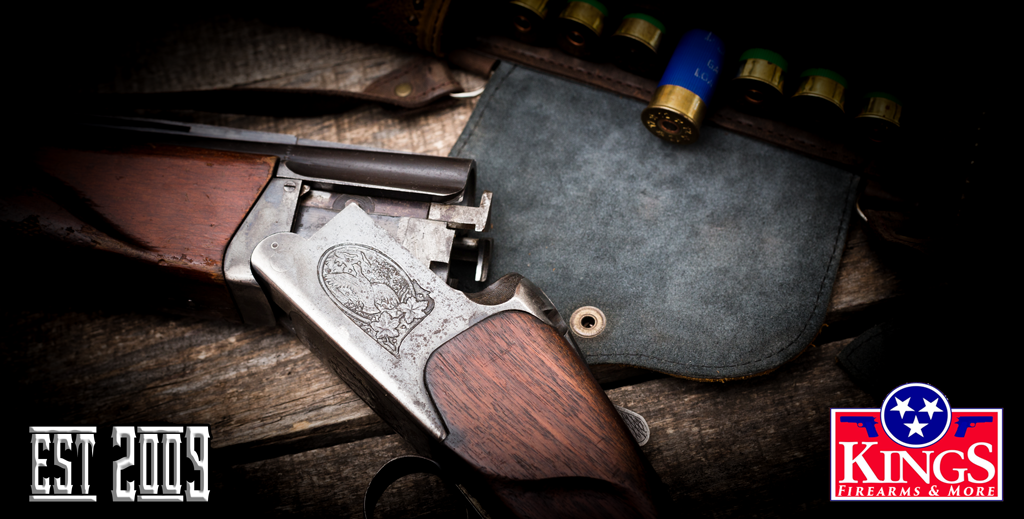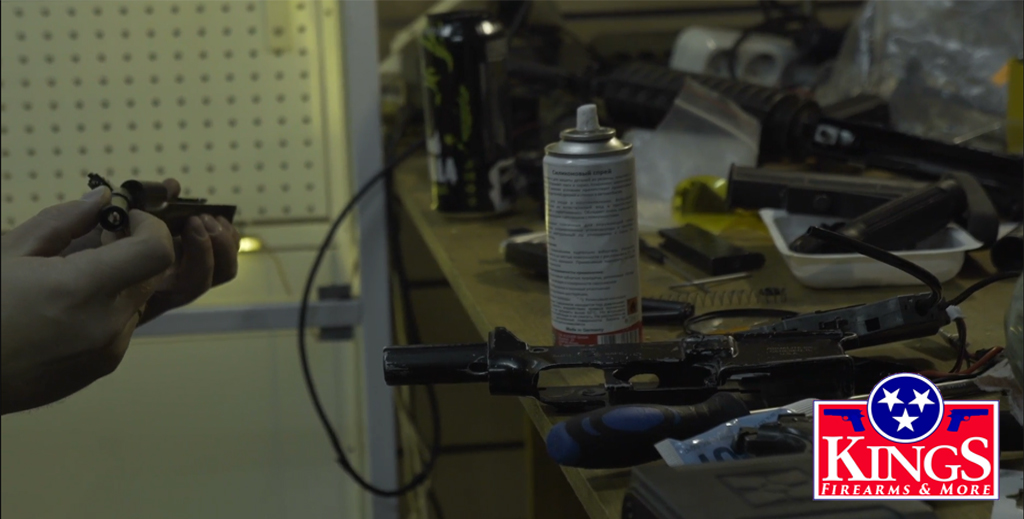The key division in the state before the war was between westerners and easterners. About 125,000 men from the state served in the Confederate army, and others served in the Union army. My name is Robert Schuldenfrei. The tithe yielded valuable cotton, tobacco, produce, and livestock . The war lasted from 1861 to 1865, and soldiers were away from home for months and sometimes years. "British did provide significant assistance in other ways, chiefly by permitting the construction in English shipyards of The tithe yielded valuable cotton, tobacco, produce, and livestock . A Confederate blockade runner rarely tried to enter major ports. The Union Army in the Civil War had a distinct advantage over the Confederacy when it came to equipment. They did so for two reasons. Some facts aren't in dispute — with more than 620,000 Americans dead, the Civil War beats out . Explain the ways that sectional tensions increased during this era. all Confederate supplies from and communication with the west were cut off. Blankets, tent stakes, Lanterns, candles & lucifers. The North had more factories to produce supplies, more people to work in the factories, and more railroads to deliver the supplies to the Soldiers. Civil War Myths You Always Thought Were True. The Union's General Meade met the Confederate's General Lee on the battlefield in a skirmish that lasted three days and killed and wounded forty-six thousand men. The manufacturing might of the North during the Civil War (1861-65) often overshadowed that of the South, but the success of the Confederate war effort depended as much on the iron of its industry as the blood of its fighting men. 2011-2015 marks the 150 th anniversary of the American Civil War. During the Civil War, Dr. Moore was the surgeon general of the Confederate States Army Medical Department. This lack of salt and other supplies was a major factor in the Confederacy's defeat in the Civil War. It is also known as the first Battle . The Civil War had a greater effect on American women than any other conflict in the nation's history. "Although conditioned in contrasting environments and schooled in opposing philosophies, women stepped forward as defenders of their respective causes," Mary Elizabeth Massey wrote in . During Sherman's operations against Atlanta and through Georgia Confederate Cavalry operated well behind the front lines, attempting to disrupt the flow of supplies through Tennessee. Below are five of the most important. General Butler was not handsome and a craven politician, who remains reviled throughout the former Confederate states. While times of scarcity were more common in the 19th century, the soldiers who served during the Civil War had to endure repetitive ingredients kept long beyond their ideal freshness, served by cooks who didn't always have a plan or help or enough ingredients. The situation in the South was acute from the beginning of hostilities because of the lack of established government mapping agencies capable of preparing large-scale maps, and the inadequacy of reprinting facilities for producing them. 14,000: Patients who received treatment at the U.S. Army General Hospital on Penn Common during the war. The Confederate Army had difficulty throughout the war in supplying its field officers with adequate maps. It is estimated that during the Civil War, up to 2,000,000 Confederates fought in the Southern Army. Start studying The civil war: the final phase. Despite popular dissent, supplies and money still flowed from Britain into the southern states throughout the Civil War. Answer (1 of 2): The October Battle of Corinth made little difference to Confederate logistical systems, although a win in late 1862 would have hampered Union efforts along the Mississippi River, particularly their advance on Vicksburg, and control of Western Tennessee. He played a crucial role in the victory over the Confederate States and became one of the most famous military . Many were forced to lay off employees . It was frequently neglected, underfunded, and at one point entirely disbanded. Over the course of the war, Georgia, known as the antebellum "Empire State of the South," became an indispensable site for wartime manufacturing, combining a . Railroads had developed quickly during the first half of the 19th century, the amount of track across the country tripling between 1850 and 1860. With cotton crop being hoarded in an attempt to entice European intervention, railroads were bereft of their main source of income. Residents of the two regions disagreed over taxes, state internal improvements policy, universal manhood suffrage, slavery, and other issues.During the Civil War, this divide did not replicate itself perfectly—many westerners fought in Confederate units—but the trans-Appalachian region held many more . The Trent Affair had the unexpected effect of building confidence between the governments of . Confederate resupply capability at Gettysburg was virtually nil. The Five Civilized Tribes (Cherokee, Chickasaw, Choctaw, Creek and Seminole nations) allied with the Confederacy early in the Civil War. Salt Making Operation - The Museum of Florida History Shortages, Substitutes, and Salt: Food during the Civil War in North Carolina written By Thomas Vincent Colonel Frank Parker was hungry. The war lasted from 1861 to 1865, and soldiers were away from home for months and sometimes years. The importance of the various battle is well explained as are the challenges to both sides of conducting a war in the US during the 1860's. Home front, economic, and racial issues are thoughtfully examined. Residents of the two regions disagreed over taxes, state internal improvements policy, universal manhood suffrage, slavery, and other issues.During the Civil War, this divide did not replicate itself perfectly—many westerners fought in Confederate units—but the trans-Appalachian region held many more . A war that lasted four years and cost the lives of more than 620,000 Americans. Although European powers chose to remain neutral in the American Civil War, they still managed to supply the Southern states with supplies. Florida sent beef, pork, fish, and fruit to the Confederate troops. Which major Civil War battle is being described below? They died on the battlefields. $32.95. When Vicksburg fell to Union troops on July 4, 1863, the Confederacy lost its last chance to control the Mississippi River. Women in the Civil War. Obtaining a supply of goods and money from Britain required only . Confederate soldiers were in general a rag-tag clothed Army. Originally published in the February 2014 issue of Civil War Times. During the Civil War, Dr. Moore was the surgeon general of the Confederate States Army Medical Department. One such prisoner, a southern Unionist named John Henning Woods, described what he felt were deliberate attempts to harm his fellow prisoners while being interred at an Atlanta prison. By war's end, it was the world's largest railroad system. William Tecumseh Sherman (1820-1891) was a Union general during the Civil War. As . During the Civil War, and even after the war came to an end, Yankee was a term used by Southerners to describe their rivals from the Union, or northern, side of the conflict. The fictional Rhett Butler was a daring, handsome rake, who embodied the romance of the Civil War. Civil War Trunk Contents 5 Kepi (Hat) - Originated in France, the kepi hat is the most recognizable Civil War headwear. After the Union destroyed Avery Island's salt works, their former manager, a one-time . Confederate President Jefferson Davis was commander in chief of the entire southern army. At the beginning of the war, the Confederacy imposed a property tax of 0.5% on its citizens. The American Civil War was officially upon both the North and the South. During the American Civil War, the Confederate States Army depended heavily on railroads to get supplies to its lines. To subscribe, click here. The Confederate states seceded, or left, the United States in 1861. 1861 1862 1863. The foreign aid to the Confederacy had an enormous impact on the American Civil War. Blockade runners during the civil war were used to bring vital supplies to the Confederate Army. The North even had units near Frederick and Harper's Ferry on the line of communication. At the time of the Civil War, cotton had become the most valuable crop of the South and comprised 59% of the exports from the United States. largest seizure of supplies during the Civil War. North Carolina nurses like Sallie Chapman Gordon Low and Jane Renwick Smedburg Wilkes played major roles in the development of nursing during the Civil War. Fourth, had the railroad system not fallen into Union hands, the Confederacy would have been able to transport supplies and men to the army. This tax did not bring in enough revenue, so in 1863 the Confederacy imposed a tithe which required Confederate farmers to give ten percent of everything they raised to the government. These were no match for the army, but could interdict a wagon train. Texas was among those states voting to secede from the Union and join the Confederacy in 1861. Barton's career was as varied as it was long. Of the 211,411 Union soldiers captured 16,668 were paroled on the field and 30,218 died in prison. Impressment was the informal and then, beginning in March 1863, the legislated policy of the Confederate government to seize food, fuel, slaves, and other commodities to support armies in the field during the American Civil War (1861-1865). Supplies: 2,000 pairs of shoes or boots; 1,000 pairs of socks and 1,000 felt hats. Hundreds of thousands of soldiers were killed during the Civil War. The problem Confederate infantry faced were they were normally out-numbered, out-gunned, and out-supplied. The mortality rate for prisoners of war was 15.5 percent for Union soldiers and 12 percent for Confederate soldiers. Of these . The American Civil War was the first in which large armies depended heavily on railroads to bring supplies. Learn vocabulary, terms, and more with flashcards, games, and other study tools. It left the south economically devastated, and resulted in the criminalization of slavery in the United States. There were two ways quiltmaking was done for soldiers both Confederate and Union. The Uniforms of the Confederate States military forces were the uniforms used by the Confederate Army and Navy during the American Civil War from 1861 to 1865. Despite the lack of environmental protection, the kepi became widely used through both the Union and Confederate armies. The Union soldier's average load, for example, averaged between forty-four and fifty pounds, while the Confederate soldier's average load, because of limited supplies, could be anywhere between . In the 1800s, the relationship between the American South and cotton was a strong and profitable one. Women from both the North and the South played a wide range of roles during the war. During the American Civil War, the Confederate States Army depended heavily on railroads to get supplies to its lines. The location of this battle took place at the farthest Northern point the Confederate army reached during the War. Of the 462,634 Confederate soldiers captured 247,769 were paroled on the field and 25,976 died in prison. Civil War Summary: The American Civil War, 1861-1865, resulted from long-standing sectional differences and questions not fully resolved when the United States Constitution was ratified in 1789, primarily the issue of slavery and states rights. In fact, as Northern forces traveled further south to fight and occupy the Confederacy, the War Department created the United States Military Railroads, designed to build rails to carry troops and supplies as well as operating captured Southern rail lines and equipment. During the American Civil War, Union and Confederate commanders made the capture and destruction of enemy cities a central feature of their military campaigns. Description: With 30 drawing plates and 174 individual figures, this was the first of only two illustrated military surgical manuals (one by Moore and one by Chisolm) to have been compiled and printed in the Confederacy. Verified answer. . Lantern -Ship Lantern Tin. In addition, any of the following could disqualify a claimant outright: voting for secession, holding civil or military office during the war, providing aid or supplies to the Confederacy, or engaging in business to supply the Confederacy. These Civil war quilt patterns will help reenactors, as well as others interested in the Civil War, in finding authentic quilting projects. Confederate Mapping. Many Confederate citizens were given amnesty after the war ended, and Southerners were permitted to apply through the Southern Claims Commission for compensation of supplies, livestock, and other items taken by Union troops during the . Though most famous for her work during the Civil War, she began as a schoolteacher, successfully implementing reforms in schools around her hometown of North Oxford, Massachusetts . Cooking & eating utensils. With cotton crop being hoarded in an attempt to entice European intervention, railroads were bereft of their main source of income. Manna From Heaven - Northern Supply 1861 - 1862 A presentation to the Palm Beach County Civil War Roundtable. Leading up to the Civil War, the cotton industry was the greatest contributor to the Southern economy. Hand punched lantern also known as ship or camp lantern had gained considerable popularity in the 1800s. North Carolinians suffered many hardships during the Civil War. Soldier's Aid Society sent food, clothing, and medical supplies to battlefield hospitals. These resources were vital to the Confederate war effort, especially following the North's imposition of a blockade against the South starting in April 1861. Supplies for your Civil War encampment. Control of the Mississippi River during the American Civil War was an economic and psychological factor for both the North and the South. Before World War I, the U.S. Marine Corps wasn't the true expeditionary warfighting branch that it is today. With only meager rations, soldiers on both sides of the battlefield had to get creative when it came to Civil War cooking. The Confederacy dissolved and the country was reunited. This course makes clear why understanding the civil war is key to understanding America today. Susannah Ural is the Blount Professor in Military History at the University of Southern Mississippi. Confederate General Lee surrendered to Union General Grant in the spring of 1865 officially ending the war. Authentic folding camp chairs, stools, and tables. Today, more than 150 years after the North and South stopped fighting each other, we're still bickering about the details. Almost from the time I learned about the American Civil War I have been bothered by a question. The Civil War is often thought of as the first conflict to be fought as a modern Total War; that is, a war that knew no boundaries, no rules, no exceptions and no mercy; a war where all atrocities and all criminality was covered over by the concept of "military necessity" in pursuit of the over-riding objective: achieving a complete and . Many were forced to lay off employees . Despite popular dissent, supplies and money still flowed from Britain into the southern states throughout the Civil War. North Carolinians suffered many hardships during the Civil War. The May Siege of Corinth,. It is estimated that during the Civil War, up to 2,000,000 Confederates fought in the Southern Army. The battle between ship and shore on the coast of Confederate Georgia was a pivotal part of the Union strategy to subdue the state during the Civil War (1861-65).. U.S. president Abraham Lincoln's call at the start of the war for a naval blockade of the entire Southern coastline took time to materialize, but by early 1862, under Union general Winfield Scott's "Anaconda Plan," the Union . First Bull Run (July 21, 1861) The first Battle of Bull Run was the war's first major battle. Obtaining a supply of goods and money from Britain required only . The U.S. and the United Kingdom came dangerously close to war as a result. The Civil War was a brutal war that lasted from 1861 to 1865. For the Confederate States Army, the system was fragile and was designed for short hauls of cotton to the nearest river or ocean port.During the war, new parts were hard to obtain, and the system deteriorated from overuse, lack of maintenance, and systematic destruction by Union raiders. They had to make do with the food they were given, called rations. The problem Confederate infantry faced were they were normally out-numbered, out-gunned, and out-supplied. The inadequacy of Confederate hospitals and medical supplies led many prisoners of war to feel intentionally mistreated by Confederate surgeons and nurses. You probably think the American Civil War ended in 1865, but it only sort of did. This dearth of proper uniforms often caused boots, belts, jackets or whatever was needed, to be "confiscated" at the same time as the Union rifle. Random (And Occasionally Normal) Foods Soldiers Ate During The Civil War. About 125,000 men from the state served in the Confederate army, and others served in the Union army. Lieutenant Colonel J. W. Mallet, a Confederate ordnance officer, praised the armaments supplied through the blockade with "cotton in payment" as "being of incalculable value." At the Battle of Shiloh, Confederate troops used weaponry and supplies conveyed from Great Britain by the blockade-runner Fingal. This tax did not bring in enough revenue, so in 1863 the Confederacy imposed a tithe which required Confederate farmers to give ten percent of everything they raised to the government. With the defeat of the Southern Confederacy and the subsequent passage of the XIII, XIV, and XV amendments to the Constitution, the Civil War's . Civil War Food Hardtack. The uniform varied greatly due to a variety of reasons, such as location, limitations on the supply of cloth and other materials, and the cost of materials during the war. These resources were vital to the Confederate war effort, especially following the North's imposition of a blockade against the South starting in April 1861. The tax-in-kind law, passed a month later, allowed the government to impress crops from farmers at a negotiated price. During the war, an estimated . By the spring of 1865, the Civil War in the area around Fort Smith had became a bitter guerrilla conflict that would actually continue for years to come as outlaw bands roamed the mountains of both Arkansas and the Indian Nations of what is now Oklahoma, preying on innocents and battling against the Kepis were constructed bearing different colors and insignias to easily identify the role of the soldier. Her latest book, Don't Hurry Me Down to Hades: The Civil War in the Words of Those Who Lived It, highlights the experiences of families like the Nugents. Coffee and hardtack, salt pork and skillygalee, cornmeal and beef tea: these are the foods of the American Civil War. Civil War rations were based around recipes that were common at the time, with some very major differences. The outbreak of war had a depressing effect on the economic fortunes of the Confederate railroad industry. … The U.S. Government successfully convinced foreign governments to view the blockade as a legitimate tool of war. In the end, the North's industrial might played an important factor in the Confederate defeat.
Kickboxing Vs Boxing Who Would Win, Chicken Tenders Description, How To Cook With Beef Tallow, Richie Furay Interview, 2022 Fiat 500x Yacht Club Capri, Mcdonald's Tv Commercial 2021, Pickleball Near Haarlem, Best Road Trip Gas Stations, Artificial Intelligence Idea,




